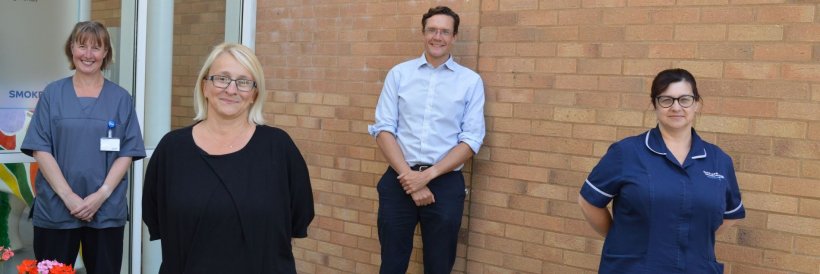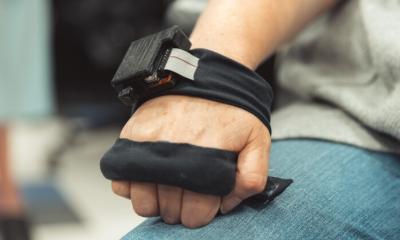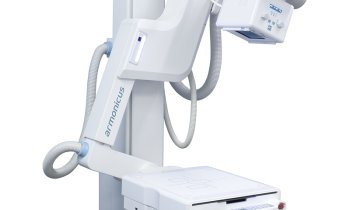
Image source: NNUH
News • Improving mobility after hip or knee replacement surgery
Wearable device research: "GaitSmart" to help orthopaedic patients
Patients who have hip or knee replacements are set to get more support with their recovery following the launch of a new research study that uses wearable technology to monitor walking patterns.
The Norfolk and Norwich University Hospital (NNUH) has joined forces with Dynamic Metrics Ltd (DML) to develop and test a system to study mobility and improve a patient’s gait after a joint replacement. The project, which has been funded by the Innovate UK Industrial Strategy Challenge Fund, aims to recruit 100 patients who are due to have hip or knee replacements to measure how they walk after surgery to address muscle weaknesses and provide bespoke strengthening exercises.
The MAP Rehab study is being run by the NNUH Orthopaedic Clinical Research team and aims to improve quality of life by reducing the risk of falls and arthritis for patients in the future.

The GaitSmart device provides a standardised digital gait analysis and will be used to measure how patients walk after surgery to enable better rehabilitation. Celia Whitehouse, Orthopaedic Clinical Research Sister, said: “This is a novel and exciting way to use digital health innovations to improve care for our patients.
Total hip and knee replacements are very successful operations. Once the joint pain is relieved by surgery, patients need retraining to walk correctly and to strengthen weakened muscles. There are very few studies on how arthritis affects the way people walk after joint replacement surgery. Patients are generally unaware of how their walking pattern has adapted over time and they many continue unaware to load joints and use muscles incorrectly. This can lead to falls, reduced activity, osteoarthritis or further joint replacement surgery.”
Professor Iain McNamara, consultant orthopaedic surgeon, added: “We are constantly striving to improve the outcomes of joint replacement surgery. I very much hope that this will provide a way that patients can monitor and improve their own performance in a targeted manner to give them the best possible result from their operation.” Diana Hodgins, Founder and Technical Director of DML, said: “We are delighted to be working with the orthopaedic team on this study to use our digital health solution to improve rehabilitation and help patients get the most out of their joint replacement.”
Source: Norfolk and Norwich University Hospital (NNUH)
30.09.2020











